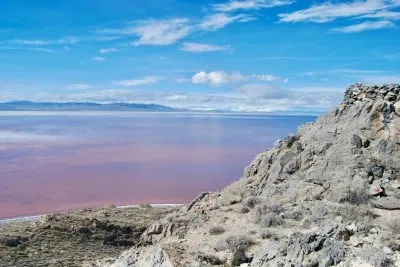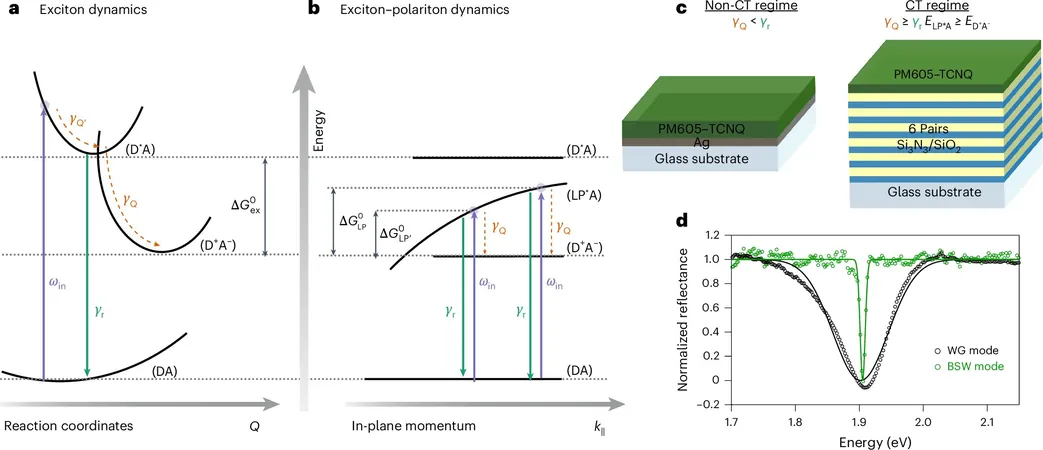
Unveiling 8,000 Years of Environmental Change in Great Salt Lake
2025-08-18
Author: Noah
A Deep Dive into Great Salt Lake's Past
For over 8,000 years, Utah's Great Salt Lake has been a silent witness to the planet's environmental shifts, adapting to climate changes and water inflows. Recent discoveries reveal that the impact of human activity over the last two centuries has thrust the lake into a biogeochemical state not observed in over 2,000 years.
What Sediments Reveal About Our Environment
A groundbreaking study conducted by Gabriel Bowen, a geoscientist at the University of Utah, analyzed isotope data from sediments at the lake's bottom. This research dives deep into the lake’s transformation, tracing its evolution from the expansive freshwater Lake Bonneville to its current form. "Lakes are vital indicators—they encapsulate water, sediment, carbon, and nutrients," Bowen explained, emphasizing their role in understanding environmental changes.
A Window Into Environmental Management
Bowen's study, recently published in Geophysical Research Letters, supplies crucial data on the geology and hydrology of Great Salt Lake. This information comes at a critical time when the lake is grappling with historically low water levels due to ongoing drought. The analysis fills gaps in understanding how external factors impact fragile ecosystems.
Two Key Human Impacts on the Lake
By utilizing oxygen and carbon isotopes present in lakebed sediments, the research outlines two significant human-driven changes: 1. **Mid-19th Century**: The arrival of Mormon settlers in 1847 spurred rapid irrigation, which transformed the surrounding landscape and altered the lake's carbon cycle by increasing organic matter inflow. 2. **Mid-20th Century**: The construction of a railroad causeway in 1959 disrupted the natural flow between the lake's northern and southern arms, transforming Gilbert Bay into an open system and altering salinity levels.
Decoding Sediment Layers for Answers
Bowen collected sediment cores to study different timelines: - The first core, taken from south of Fremont Island, dates back 8,000 years, reflecting pre-settlement conditions. - The second set, retrieved by the U.S. Geological Survey, captures changes from the last few hundred years. Through isotope analysis, Bowen illuminated shifts in the lake's chemistry and ecosystems.
The Profound Shift After Settlement
The analysis revealed a dramatic change in carbon levels, coinciding with the influx of settlers who introduced irrigated agriculture in Salt Lake Valley. Bowen noted a shift from carbon sources typically associated with rock weathering to those driven by vegetation, marking an unprecedented change in the lake's carbon cycle.
Tracking Water Balance Changes
Bowen’s oxygen isotope analysis also reconstructed shifts in the lake’s water balance. It illustrated how evaporation rates shifted in response to the causeway's construction, which changed the lake's hydrological dynamics. This construction suddenly turned Gilbert Bay from a terminal lake into one with an outflow, impacting salinity and buying time against dwindling water levels.
Conclusion: A Turning Point for Great Salt Lake
Across its 8,000-year history, the Great Salt Lake has predominantly remained in a state of high evaporation. The changes brought by human intervention, particularly the causeway, reversed this trend, showcasing how our actions profoundly influence natural ecosystems. With this new understanding, there’s hope for better management and conservation strategies for this vital body of water.









 Brasil (PT)
Brasil (PT)
 Canada (EN)
Canada (EN)
 Chile (ES)
Chile (ES)
 Česko (CS)
Česko (CS)
 대한민국 (KO)
대한민국 (KO)
 España (ES)
España (ES)
 France (FR)
France (FR)
 Hong Kong (EN)
Hong Kong (EN)
 Italia (IT)
Italia (IT)
 日本 (JA)
日本 (JA)
 Magyarország (HU)
Magyarország (HU)
 Norge (NO)
Norge (NO)
 Polska (PL)
Polska (PL)
 Schweiz (DE)
Schweiz (DE)
 Singapore (EN)
Singapore (EN)
 Sverige (SV)
Sverige (SV)
 Suomi (FI)
Suomi (FI)
 Türkiye (TR)
Türkiye (TR)
 الإمارات العربية المتحدة (AR)
الإمارات العربية المتحدة (AR)